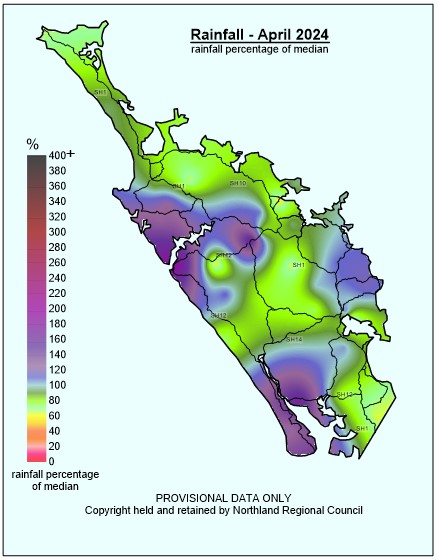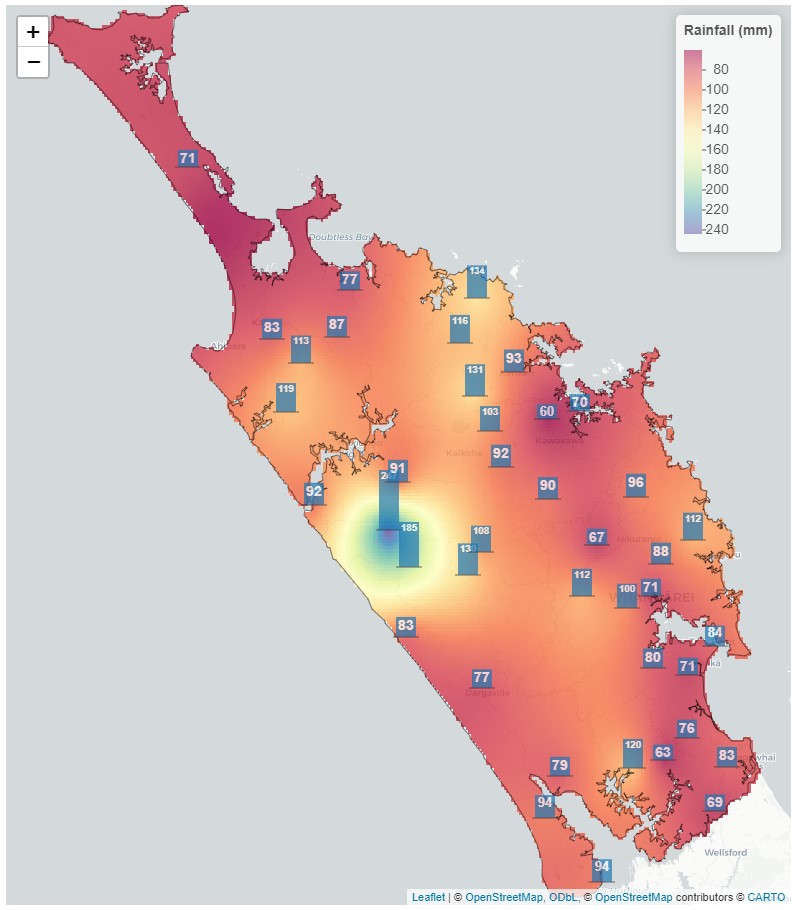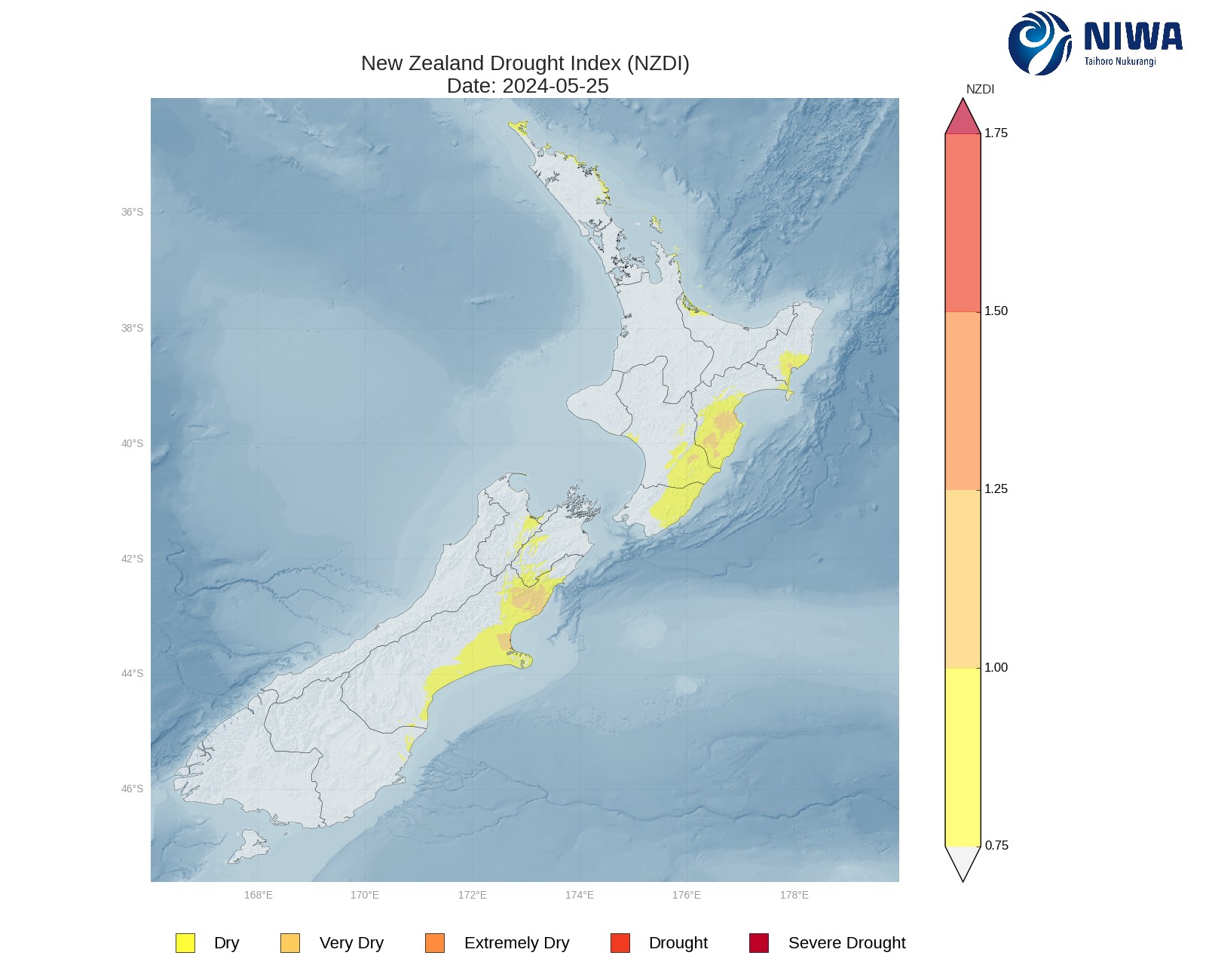Good news for Northland climate outlook
A shift from El Niño to neutral rainfall conditions is on the horizon for Northland.
The shift is signalled by key oceanic markers being below El Niño thresholds and approaching neutral temperatures in the central and eastern tropical Pacific Ocean.
This indicates that the 2023-24 El Niño event is ending, which is likely to bring close to normal rainfall to northern regions, significantly reducing fears of ‘very dry’ or drought conditions.

1. Overall, Northland averaged 95% of the usual April rainfall.
Recent rainfall patterns for Northland averaged 95 per cent of usual April rainfall. From 1 – 27 May, totals varied from a low of 63mm in the Paparoa catchment at Maungaturoto, to 246mm in the upper Waimamaku catchment in South Hokianga.

2. May rainfall totals for Northland to date (1 May to 27 May 2024)
Regular westerly fronts are expected to return, bringing rainfall distributions closer to normal for late autumn. However, there is still a need to conserve water. While most monitored river flows in Northland are above minimum flows, groundwater levels vary. Northland’s primary monitored aquifers are below normal to low in central and eastern areas, and normal to above normal in the north and south. Groundwater levels are extremely low in Russell and low to very low in Kaikohe.
Soil moisture levels recorded at NIWA's Northland climate stations are mostly below average for this time of year. The exception is Kaikohe, where levels are above average, and Kerikeri, where levels are average.
The NIWA Drought Index suggests that while most of Northland is now normal for this time of year, the northeastern coastal margins remain dry as winter approaches.

3. The NIWA Drought Index on 25 May indicates that most of Northland is normal for this time of year, while the northeastern coastal margins are dry.
For more information, refer to NIWA’s Climate Outlook Summary May – July 2024

